Arizona Wild Flowers
Pictures, Photos, Images
Descriptions, Information, Reviews.
Palmer's Amaranth, Amaranthus palmeri.
We Are Proud Of Our SafeSurf Rating!
Click On Any Of The Following Links By Amazon.Com
For Amaranth Grain & Candy. No Obligation!
 |
| Palmer's Amaranth, Amaranthus palmeri. |
|---|
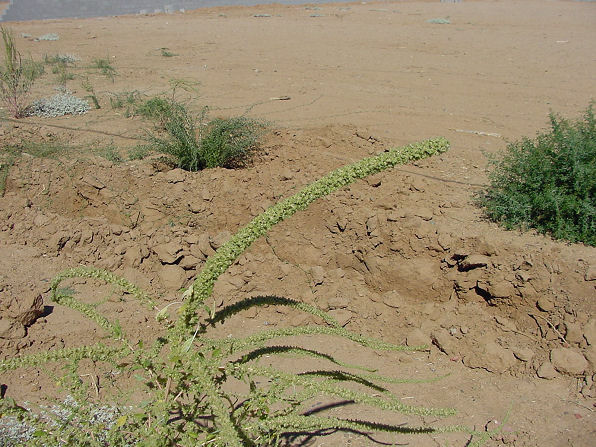 |
| Palmer Amaranth, Terminal Panicle. |
|---|
 |  |
| Palmer's Amaranth Panicle Flowers. | Palmer's Amaranth Panicle Flowers. |
|---|---|
 | 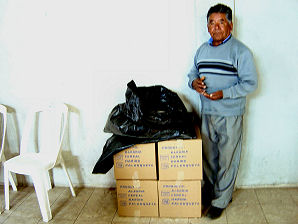 |
| Amaranth Alegrķa Candy. In Tlaxcala, Mexico. | Amaranth Alegrķa Candy Ready For Market. In Tlaxcala, Mexico. |
 | 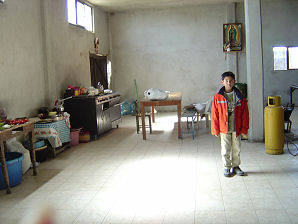 |
| Hector Junior, Showing Us Alegrķa Candy Cooking Pots. In Tlaxcala, Mexico. | Hector Junior, Showing Us The Amaranth Alegrķa Candy Factory. In Tlaxcala, Mexico. |
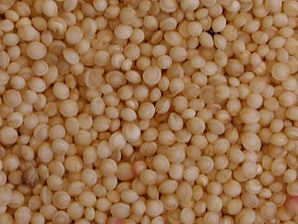 | 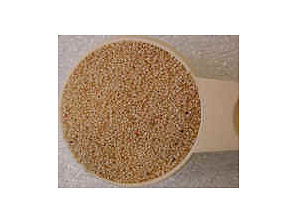 |
| Amaranth Seeds. | Amaranth Alegrķa Candy. |
 /
/

Palmer's Amaranth.
We wish to thank Wikipedia, the free encyclopedia for some of the information on this page. We share images and information with Wikipedia. Amaranthus palmeri is a species of edible flowering plant in the amaranth genus. It has several common names, including Palmer's amaranth, Palmer amaranth, Palmer's pigweed, and Carelessweed. It is native to most of the southern half of North America. Populations in the eastern United States are probably naturalized. It has also been introduced to Europe, Australia, and other areas. An erect summer annual that usually reaches 6 1/2 feet tall. Some have been seen as tall as 15 feet. It is considered a weedy herb. The plant is fast-growing and highly competitive. The leaves, stems and seeds of Palmer amaranth, like those of other amaranths, are edible and highly nutritious. Palmer's amaranth was once widely cultivated and eaten by Native Americans across North America, both for its abundant seeds and as a cooked or dried green vegetable. Other related Amaranthus species have been grown as crops for their greens and seeds for thousands of years in Mexico, South America, the Caribbean, Africa, India, and China. However, Palmer's amaranth can be toxic to livestock animals due to the presence of nitrates in the leaves, even for humans. Like spinach and many other leafy greens, amaranth leaves also contain oxalic acid, which can be harmful to individuals with kidney problems if consumed in excess. Because of its toxicity to livestock, and the lack of knowledge, in the United States with the uses of amaranths as food, Palmer's amaranth is rarely consumed in the USA, despite its ubiquity and resistance to drought. In the USA, Palmer's amaranth is considered a weed and a threat most specifically to the production of genetically modified cotton and soybean crops in the southern United States because in many places. In addition, the plant has developed resistance to glyphosate, the active ingredient in the widely used broadleaf herbicide Roundup. Glyphosate-resistant pigweed not only dominates in cotton fields, but it has wide ranging effects on other crops and productions, as well. This plant has a type of pollen which is the cause of a lot of summer and fall hay fever allergies. However, in Mexico, the seeds are dried, mixed with honey and baked. This produces a very nutritious sweet, food that is very highly prized as a candy in Mexico. We will include photos of such a candy factory in Tlaxcala, near Mexico City. Amaranth was so necessary to both the religion and nutrition of the Aztecs that it was one of the four grains considered as acceptable tribute from outlying parts of the empire, the other three being corn, beans and chia. The Mendocino Codex indicates that the equivalent of the modern measure of 4,000 tons of amaranth a year arrived in Tenochtitlan. The leaves and seeds of the amaranth plant are still characteristic ingredients in Mexican cuisine, especially in the states of Morelos, Mexico, Puebla, Tlaxcala, and particularly Oaxaca, where the plant is widely cultivated as a valuable cash crop, worth four times more per kilo than corn. This is understandable, given the fact that amaranth provides a high quality protein, with a nearly perfect balance of essential amino acids, including abundant lysine and methionine, not found in most grains. We will include photos of an example of such a candy factory in Tlaxcala, Mexico. We will also include the recipe from the owner of the factory, in case you wish to make your own Amaranth Alegrķa Candy. We also are placing a nutrition chart at the bottom of the page. Palmer Amaranth is often confused among the members of the pigweed family, but it is the only one with terminal panicles that are about 18' in length.
Quick Notes:
Height: Up To about 6 1/2 feet tall. Spreads up to about 6 feet wide.
Flowers: The flowers are small and light green in color. They are found in dense, compact terminal panicles that are 6' to 18' in length. The male and female flowers are found on seperate plants.
Flowering Time: June - November.
Fruit: Small, dry, one seeded. It is in a single seeded utricle about 2 mm in size, which splits to show a dark - brown to black seed.
Leaves: Alternate, simple, lance shaped leaf, 2 to 9 inches long, 2 1/2 inches to 2 1/2 inches wide, green above, with white veins beneath. They are found on one central stem in several lateral branches.
Found: Native to Northern Africa, Europe and Asia and is widely naturalised in the USA (AR, AZ, CA, CO, FL, GA, IL, KS, KY, LA, MA, MD, MO, MS, NC, NE, NJ, NM, NV, NY, OH, OK, PA, SC, TN, TX, UT, VA, WI, WV), Also found in Canada (ON). Also found throughout Mexico.
Hardiness:
Soil pH requirements:
Sun Exposure:
Elevation: 0 - 5,500 Feet.
Habitat: Disturbed soils of hillsides, roadsides, flats, sandy plains. In towns they are largely confined to roadsides, borders of cultivated lands, fields, sidewalks, vacant lots, and drainage areas.
Miscellaneous: Flowering Photos Taken October 13, 2005 In northwest Glendale, Arizona.
|
|
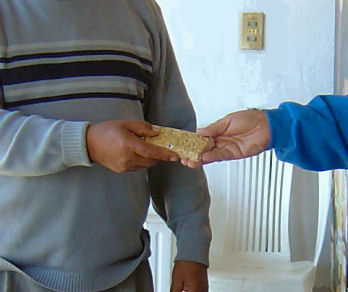 |
|
|
Amaranth
Scientific Name: Amaranthus spp.
NDB No: 20001
| Nutrient | Units | Value per 100 grams of edible portion |
Sample Count |
Std. Error |
1 cup ------- 195.0 g |
|---|---|---|---|---|---|
| Proximates | |||||
| Water |
g
|
9.84
|
11
|
0.748
|
19.188
|
| Energy |
kcal
|
374
|
0
|
|
729.300
|
| Energy |
kj
|
1565
|
0
|
|
3051.750
|
| Protein |
g
|
14.45
|
12
|
0.688
|
28.177
|
| Total lipid (fat) |
g
|
6.51
|
12
|
0.327
|
12.694
|
| Carbohydrate, by difference |
g
|
66.17
|
0
|
|
129.031
|
| Fiber, total dietary |
g
|
15.2
|
0
|
|
29.640
|
| Ash |
g
|
3.04
|
11
|
0.651
|
5.928
|
| Minerals | |||||
| Calcium, Ca |
mg
|
153
|
10
|
6.859
|
298.350
|
| Iron, Fe |
mg
|
7.59
|
9
|
0.552
|
14.800
|
| Magnesium, Mg |
mg
|
266
|
10
|
9.715
|
518.700
|
| Phosphorus, P |
mg
|
455
|
2
|
|
887.250
|
| Potassium, K |
mg
|
366
|
10
|
26.193
|
713.700
|
| Sodium, Na |
mg
|
21
|
11
|
4.696
|
40.950
|
| Zinc, Zn |
mg
|
3.18
|
10
|
0.192
|
6.201
|
| Copper, Cu |
mg
|
0.777
|
10
|
0.067
|
1.515
|
| Manganese, Mn |
mg
|
2.260
|
10
|
0.244
|
4.407
|
| Vitamins | |||||
| Vitamin C, total ascorbic acid |
mg
|
4.2
|
1
|
|
8.190
|
| Thiamin |
mg
|
0.080
|
2
|
|
0.156
|
| Riboflavin |
mg
|
0.208
|
3
|
0.016
|
0.406
|
| Niacin |
mg
|
1.286
|
5
|
0.438
|
2.508
|
| Pantothenic acid |
mg
|
1.047
|
2
|
|
2.042
|
| Vitamin B-6 |
mg
|
0.223
|
2
|
|
0.435
|
| Folate, total |
mcg
|
49
|
2
|
|
95.550
|
| Folic acid |
mcg
|
0
|
0
|
|
0.000
|
| Folate, food |
mcg
|
49
|
2
|
|
95.550
|
| Folate, DFE |
mcg_DFE
|
49
|
0
|
|
95.550
|
| Vitamin B-12 |
mcg
|
0.00
|
0
|
|
0.000
|
| Vitamin A, IU |
IU
|
0
|
0
|
|
0.000
|
| Vitamin A, RE |
mcg_RE
|
0
|
0
|
|
0.000
|
| Vitamin E |
mg_ATE
|
1.030
|
0
|
|
2.008
|
| Lipids | |||||
| Fatty acids, total saturated |
g
|
1.662
|
0
|
|
3.241
|
| 14:0 |
g
|
0.011
|
7
|
|
0.021
|
| 16:0 |
g
|
1.284
|
7
|
|
2.504
|
| 18:0 |
g
|
0.220
|
7
|
|
0.429
|
| Fatty acids, total monounsaturated |
g
|
1.433
|
0
|
|
2.794
|
| 18:1 undifferentiated |
g
|
1.433
|
7
|
|
2.794
|
| Fatty acids, total polyunsaturated |
g
|
2.891
|
0
|
|
5.637
|
| 18:2 undifferentiated |
g
|
2.834
|
7
|
|
5.526
|
| 18:3 undifferentiated |
g
|
0.057
|
7
|
|
0.111
|
| Cholesterol |
mg
|
0
|
0
|
|
0.000
|
| Phytosterols |
mg
|
24
|
1
|
|
46.800
|
| Amino acids | |||||
| Tryptophan |
g
|
0.181
|
10
|
|
0.353
|
| Threonine |
g
|
0.558
|
38
|
|
1.088
|
| Isoleucine |
g
|
0.582
|
38
|
|
1.135
|
| Leucine |
g
|
0.879
|
38
|
|
1.714
|
| Lysine |
g
|
0.747
|
38
|
|
1.457
|
| Methionine |
g
|
0.226
|
32
|
|
0.441
|
| Cystine |
g
|
0.191
|
28
|
|
0.372
|
| Phenylalanine |
g
|
0.542
|
32
|
|
1.057
|
| Tyrosine |
g
|
0.329
|
32
|
|
0.642
|
| Valine |
g
|
0.679
|
38
|
|
1.324
|
| Arginine |
g
|
1.060
|
30
|
|
2.067
|
| Histidine |
g
|
0.389
|
32
|
|
0.759
|
| Alanine |
g
|
0.799
|
30
|
|
1.558
|
| Aspartic acid |
g
|
1.261
|
30
|
|
2.459
|
| Glutamic acid |
g
|
2.259
|
30
|
|
4.405
|
| Glycine |
g
|
1.636
|
32
|
|
3.190
|
| Proline |
g
|
0.698
|
28
|
|
1.361
|
| Serine |
g
|
1.148
|
32
|
|
2.239
|
USDA Nutrient Database for Standard Reference, Release 14 (July 2001)



We Are Proud Of Our SafeSurf Rating!
Click On Any Of The Following Links By Amazon.Com
For Books, & Videos About Xerioscape Plants Of Arizona & The Southwest USA. No Obligation!
Click On Any Of The Following Links By Amazon.Com
For Books, & Videos About Wildlife Of Arizona & The Southwest USA. No Obligation!
Click On Any Of The Following Links By Amazon.Com
For Books, & Videos About Wildlife Of Arizona & The Southwest USA. No Obligation!
| © 1966 - Present, Audrey, Eve, & George DeLange |


